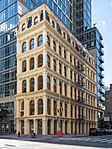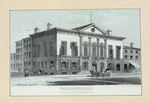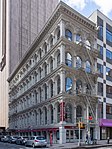Ted Weiss Federal Building

The Ted Weiss Federal Building, also known as the Foley Square Federal Building, is a 34-story United States Federal Building located at 290 Broadway in Foley Square in the Civic Center district of Lower Manhattan, New York City. The building, which is adjacent to the African Burial Ground National Monument's Outdoor Memorial, was opened in 1995. The building is named for Ted Weiss (1927–1992), who had been a Democratic member of the United States House of Representatives from New York. The building houses offices of the Internal Revenue Service, Environmental Protection Agency, and the General Accounting Office. Additionally, the National Park Service manages a Visitor Center to the African Burial Ground National Monument.The visitor center has bathrooms, water fountains, exhibits, a 20-minute park movie and a bookstore/giftshop. Exhibits examine topics including: archeology, colonial enslavement, and civic engagement.
Excerpt from the Wikipedia article Ted Weiss Federal Building (License: CC BY-SA 3.0, Authors, Images).Ted Weiss Federal Building
Broadway, New York Manhattan
Geographical coordinates (GPS) Address Nearby Places Show on map
Geographical coordinates (GPS)
| Latitude | Longitude |
|---|---|
| N 40.7147689 ° | E -74.0052166 ° |
Address
Ted Weiss Federal Building
Broadway 290
10007 New York, Manhattan
New York, United States
Open on Google Maps










